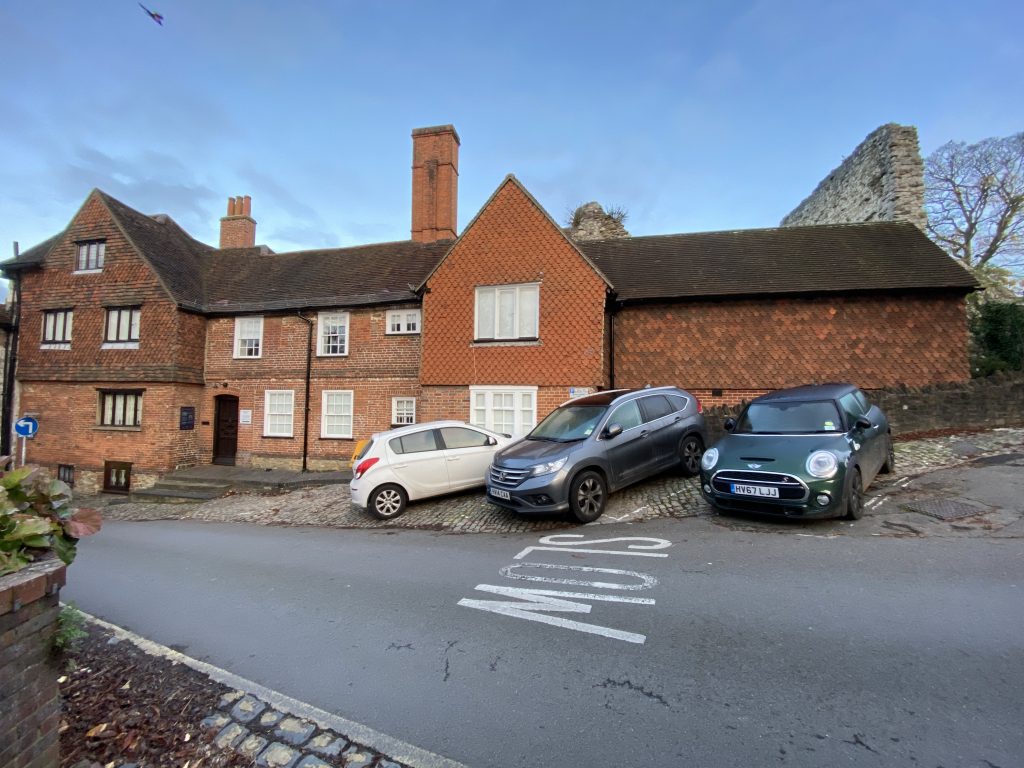Guildford borough Council is thinking about closing and selling off much of it heritage service. Why?
Faced with the need to find almost £20 million in Council budget savings by 2027 the Council needs to save money. But will these cuts save much? Will they instead just throw away opportunities future generations will regret? Imagine if it was possible to use heritage to promote the town, support the High Street and also save money. Well, it is possible and that is what the Council should be looking into.
So, what is the plan? According to a discussion document released in February, the council will close the Victorian schoolroom and Guildford House Art Gallery, “repurpose” Guildford House, sell half the museum buildings and convert the rest into a store. On the more positive side it is pinning hopes on a ten-year plan to create a more modern museum. There is, however, no mention of making more use of the castle which is an obvious attraction.

So, will this save much money? It does not seem so. The schoolroom charged for its services and covered its immediate costs, the undercroft was leased for a mere £7000 a year. The town will not sell the Guildhall, the Castle or Castle Arch House (the old part of the museum). It will still have to pay for the upkeep Guildford House and pay staff to maintain the museum and art collections no one will be able to see.
And what about a new museum? Guildford has spent the last 20 years trying to create a modern museum and has spent millions on two failed attempts. Given the current financial situation and the need to replace the Spectrum do we really believe the Council will have the energy to create a modern museum any time soon? But more seriously, is a new museum missing the point? Shouldn’t Guildford be playing to its strengths, using what makes it unique rather than trying to create something new?
How many people come to Guildford and wish it had a modern museum? How many come instead because it is a charming historic town offering a unique shopping experience unlike anywhere else. At a time when the High Street is struggling against the internet it needs to find more and more ways to provide experiences that online shopping cannot compete with. Heritage can help. It can be used to enrich a visit to Guildford and promote the town as a great place to visit. Guildford can do this now and can save money in the process.

So, what can it do? The castle is an obvious attraction. The Council will be paying for it, come what may, so why not make more of it. Not many people know that the castle featured in the legends of King Arthur, in a story inspired pre-Raphaelite artists and a poem by Tennison. It was also a royal palace and was besieged in the struggle for Magna Carta. An audio guide would be a cheap way to tell the story and with a few more exhibits (see report written by the Guildford Heritage Forum) the castle could be more of an attraction – something that can be promoted and something extra to do on a trip to Guildford
Some heritage has potential to generate income. Guildford House is a shop on the High Street. Surely it could be feasible to lease the front or ground floor to a retail outlet whose business complemented the building. Guildford House could also be kept as an attraction. It is a unique example of the type of house that was destroyed in the Great Fire of London. There are also opportunities to link Guildford House to the library which it backs onto. Surrey County Council is thinking about how to broaden the role of the library.
The museum is the most challenging site, but the Council could lease 48 Quarry Street and part of Castle Arch House and improve the displays in the rest to compliment the Castle experience. Staff are always putting on good temporary exhibitions – why not channel those efforts into gradually updating the permanent displays. The problem with the current discussion about selling off buildings is that it closes down valuable opportunities. In time the museum site and garden could be an attractive addition to the Castle Grounds, a café, venue for summer concerts and small exhibitions. Selling off half the buildings not only destroys this opportunity it also makes the oldest part of the museum, the seventeenth century Castle Arch House utterly redundant. Without a decent public entrance, it will never, ever be useable again as a public amenity.

Another problem with selling off key heritage sites is that the Council gets left with the difficult bits. Guildford Borough Council has long had the ambition to set up a trust to run heritage. This will only happen if the Council can hand over a viable proposition. Selling off the parts that have commercial potential seriously undermines this.
The Council and community need to come together and devise a plan that saves money and takes heritage forward. There are opportunities for efficiency savings as well as opportunities to make money out of existing sites and even get grants for maintenance of buildings and development of attractions. Farnham Museum was recently awarded £734,335 for the upkeep of buildings. Guildford didn’t even apply.
But there is no time to delay. Cuts are coming and the temptation will be to take the quick route to sell off some stuff and close other stuff without thinking about the long-term implications for the town. And people in the community who are interested in supporting heritage will lose interest. For twenty years Guildford Heritage has swung from impossibly ambitious lottery bids to attempts to close sites. Guildford Heritage needs a sensible plan, and it needs it now.